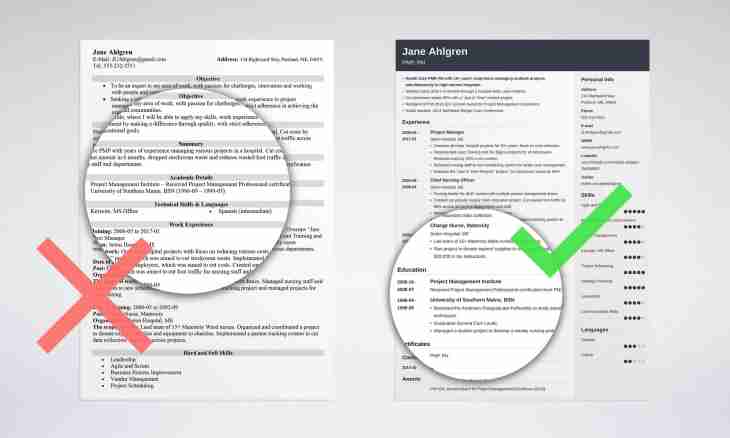Research of functions — an important part of the mathematical analysis. Though calculation of limits and creation of schedules can seem complex work, they, nevertheless, help to solve a set of important mathematical problems. It is the best of all to conduct a research of functions by the developed and checked technique.
Instruction
1. Find a function range of definition. For example, the sin (x) function is defined on all interval from - ∞ to + ∞, and function 1/x — on an interval from - ∞ to + ∞ except for a point x = 0.
2. Define areas of continuity and a point of a gap. Usually function is continuous in the same area where it is defined. To find gaps, it is necessary to calculate function limits at approach of an argument to the isolated points in a range of definition. For example, function 1/x strives for infinity when x→0+, and to minus infinity when the x→0th. It means that in a point x = 0 it has a rupture of the second sort. If limits in a point of a rupture of a konechna, but are not equal, then it is a rupture of the first sort. If they are equal, then function is considered continuous though in the isolated point it also is not defined.
3. Find vertical asymptotes if they are. Here you will be helped by calculations of the previous step as the vertical asymptote practically always is in a point of a rupture of the second sort. However sometimes not separate points, but the whole intervals of points are excluded from a range of definition, and then vertical asymptotes can be located at edges of these intervals.
4. Check whether function possesses special characteristics: parity, oddness and frequency. Function will be even if for any x in a range of definition of f (x) = f (-x). For example, cos(x) and x^2 — even functions.
5. The oddness of function designates that for any x in a range of definition of f (x) = - f (-x). For example, sin(x) and x^3 — odd functions.
6. Frequency — the property saying that there is certain number T called the period, it that for any x f(x) = f (x + T). For example, all main trigonometrical functions (sine, a cosine, a tangent) — periodic.
7. Find extremum points. For this purpose calculate derivative of the set function and find those values x where she addresses in zero. For example, the f (x) function = x^3 + 9x^2 - 15 has derivative g(x) = 3x^2 + 18x which addresses in zero at x = 0 and x =-6.
8. To define what points of an extremum are maxima and what minima, monitor change of signs of a derivative in the found zero. g(x) changes the sign from plus for minus in a point x =-6, and in a point x = 0 back from minus for plus. Therefore, the f (x) function in the first point has a maximum, and in the second — a minimum.
9. Thus, you found also areas of monotony: f(x) monotonously increases on an interval - ∞;-6, monotonously decreases on-6;0 and again increases on 0;+ ∞.
10. Find the second derivative. Its roots will show where the schedule of the set function will be convex and where - concave. For example, the second derivative of the f (x) function will be h(x) = 6x + 18. She addresses in zero at x =-3, changing at the same time the sign from minus for plus. Therefore, the schedule of f (x) to this point will be convex, after it — concave, and this point will be an inflection point.
11. Function can have also other asymptotes, except vertical, but only in case its range of definition includes infinity. That to find them, calculate a limit of f (x) when x →∞ or x →-∞. If it konechen, then you found a horizontal asymptote.
12. An inclined asymptote — a straight line of a type of kx + b. To find k, calculate a limit of f (x)/x at x →∞. To find b — a limit (f(x) – kx) at the same x →∞.
13. Construct a function graph on the calculated data. Designate asymptotes if they are. Note points of an extremum and value of function in them. For best accuracy graphics calculate values of function in several intermediate points. The research is completed.

